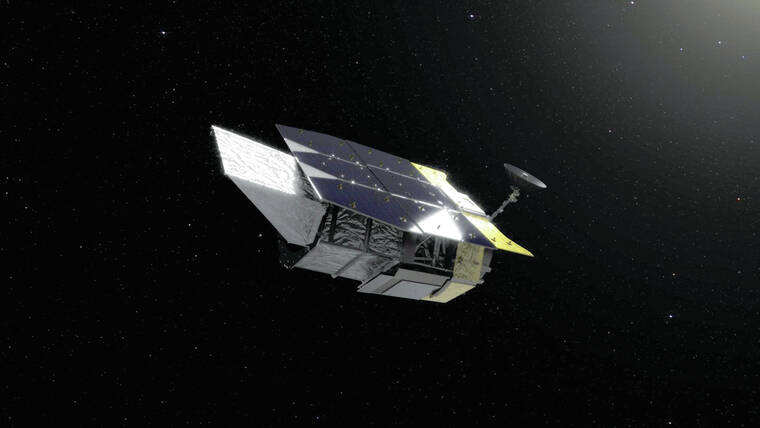MANOA — A University of Hawai‘i co-led team is assisting NASA in developing a new, high-powered space telescope as part of an effort to search for exoplanets, explore infrared astrophysics and unravel some of the universe’s greatest secrets.
David Rubin, an assistant professor in the UH Manoa Department of Physics and Astronomy, and his team are set to design software needed to process terabytes worth of data for the Nancy Grace Roman Space Telescope (Roman), set to deploy by 2027.
“Roman will revolutionize our understanding of the universe with its unprecedented volume and quality of data,” Rubin said. “But with all that data comes strict requirements on the accuracy of the software. That makes for an exciting project.”
Once deployed, Roman is expected to peer farther into space than ever before, mapping a billion galaxies throughout the course of its lifetime.
The telescope’s purpose isn’t just to take pretty pictures, though. One of Roman’s objectives is to focus on supernovae, or star explosions, in an attempt to better understand two of the astronomy’s most pressing questions — why is the universe expanding, and how quickly is that expansion accelerating?
Because Roman is set to produce such high-detail imagery, NASA will be able to isolate a supernova’s light from its surrounding environment. By knowing how luminous the supernova should be, astronomers can then use the supernova’s apparent brightness to determine exactly how far it is from Earth.
Astronomers then hope to take that data and compare it with how quickly the supernova is traveling away from Earth, repeating the process with thousands of supernovae to pinpoint a definitive measurement for the acceleration of the universe’s expansion.
“Right now, we don’t understand why the universe is expanding faster and faster, and we don’t know what the history of that expansion has been in detail” said Roy Gal, associate astronomer at the UH Institute for Astronomy. “And so these are like baby steps or toddler steps to try to get to the basic physics that govern our universe.”
However, Rubin and his team face several difficulties in designing the telescope’s software.
In order to ensure accurate readings on thousands of supernovae farther away than ever attempted, the team will have to ensure that the data gathered is more precise than in any similar technology.
Additionally, differences between Earth’s ground and orbital environments mean the telescope will behave differently once deployed — the team will have to make incredibly precise calibrations for these varying conditions.
Finally, the team has limited options for making corrections once Roman reaches orbit. Once it’s up there, it’s not coming down.
“For these measurements, they’ve got to measure the brightness of the supernovae to a small fraction of a percent’s accuracy, from a telescope that’s in space, that’s moving, that’s changing with time — and the supernova is sitting inside a galaxy that has its own light,” Gal said.
“That’s really challenging, and more challenging in space, because you can’t go and fiddle with the camera. You get what you get. And so, you have to understand how to make those measurements in a machine you can’t touch.”
If all goes to plan though, the potential upside for astronomy is immense, as Roman could provide an unprecedented look into the nature of the universe.
“It’s a capability we’ve never had before, which is to see the sky at such high spatial resolution and so much detail with quick time resolution. … I think the biggest thing will be things we’ve never seen before, or things that we’ve seen one of this and we had no idea what it was, and now we’re going to see dozens of them and start to understand them,” Gal said.


